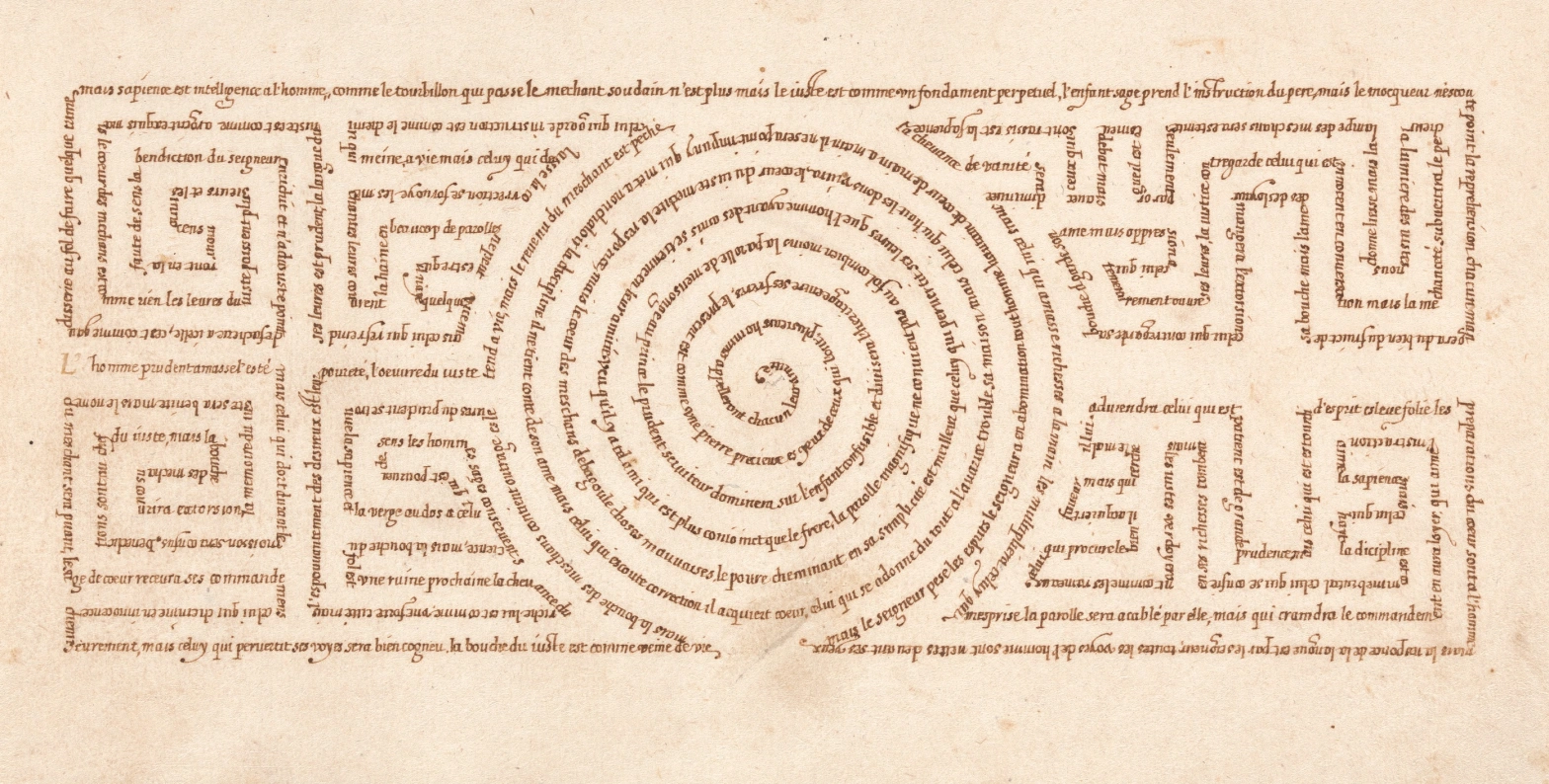You begin to read this essay of the work of Jorge Luis Borges with the best intentions. You see that he was an Argentine writer born in 1899. You note with some wry amusement that he once published a review of a book that did not exist. But as you progress through the article’s opening sentences, you find your mind wandering.
You picture yourself strolling down a street in Buenos Aires under a limitless sky. A young boy by a silent fountain stoops to trace something in the dust.
“I have almost finished it,” he says, “Come and see.” He as inscribed a labyrinth in the dry earth. “What is it?” you ask.
“To understand my labyrinth, you must traverse it.” And, as you follow with your eyes the forking paths of this figure, it seems that you are no longer looking at it but treading out a path through its curves and complex convolutions. The walls rise high around you and guide your steps, no longer earth, but stone on which are inscribed the words of poets and philosophers, of sages, saints, and kings.
Toward the center of the maze, you come to a courtyard where an elegantly dressed old man sits beside a tossing fountain. His face is long and somehow reminds you of an ancient Egyptian statue. A lion, the color of the sun, rests near his feet. “Come closer; I cannot see you very well over there. It is my eyes, you see. They are very bad since the accident.“ He coughs, and as you approach, he resumes, “You may ask three questions, but I will only answer two.”
“Why have you built this labyrinth of words?” You ask.
Borges coughs again, for it is he, as you have known for some time. “Since the days of Anaximenes, men have hated and loved the infinite. We are drawn to its boundless abyss, and yet we fear it. Whether we conceive of infinite time, that is to say, eternity, or the endlessness of space, the infinite is the gravest peril that the human mind may face. And so we must bind it in words. This labyrinth, like a story, guides your steps according to the architect’s design. Each turning in the path is a single place, and yet the permutations of your path are endless. The finite has become infinite, and the infinite finite. You must surely know that this labyrinth and my stories are one. They have one purpose, to hide and yet reveal the infinite.” He ruminates a moment. “Perhaps to trap the power of the infinite in words may be the only goal of literature.”
“I don’t understand,” you reply, “How can a story trap the infinite?”
“You ask a fine question,” Borges says, a demure smile playing about his lips. “I am reminded of something I once read. As you know, Scheherazade sought to save her companions by telling the king a story each night. And each night, she would begin a new narrative which she left quite unfinished. Once in a particular edition of the Thousand and One Nights, due to a copyist’s error, the queen begins to tell her own story to the king. We may imagine in this an infinite series. For each time she reaches this point in the tale, the drama will begin anew. Is it not like an image in which a person carries their own portrait and the figure in the portrait carries also another likeness of the same? And so on without end.”
Borges pauses to hold out his hand to the spray of the fountain. “Or take your own case. You began by reading an essay about my work, but soon found yourself strolling through Buenos Aires beneath a limitless sky. An old man at a café by a fountain stopped you and said, ‘I have almost finished it.’ He showed you a figure of a labyrinth he had drawn on the blank pages of a volume on his table. Soon in your mind’s eye, you were wandering, lost in the image you beheld. Toward its center, you came upon a child by a fountain. A jaguar, the color of the night, lay at his feet.”
“But that’s not what happened,” you say and glance down at the jaguar, bewildered by a strange sense of unreality.
“Isn’t it?” asks the child who is Borges, stretching out his hand to the spray. “I told you. To understand my labyrinth, you must traverse it. For you are now a character in my story.” He laughs. “But do not be alarmed. I only aim to amuse and delight.” He fishes a bright coin from the fountain and flips it to you. “And now you must continue to explore my labyrinth until you reach its end. Take this with you. It will bring good fortune.”
“But how will I know that I have reached the end?”
“It is good for a journey to have a goal,” replies Borges. “But you may find, in time, that the end of my labyrinth is endless.”
The Endless Labyrinth of Jorge Luis Borges: copyright 2021 by Jonathan Golding. All rights reserved.
Cover art: Seventeenth Century Micrographic Design in the Form of a Labyrinth, Artist Unknown. Public Domain.
